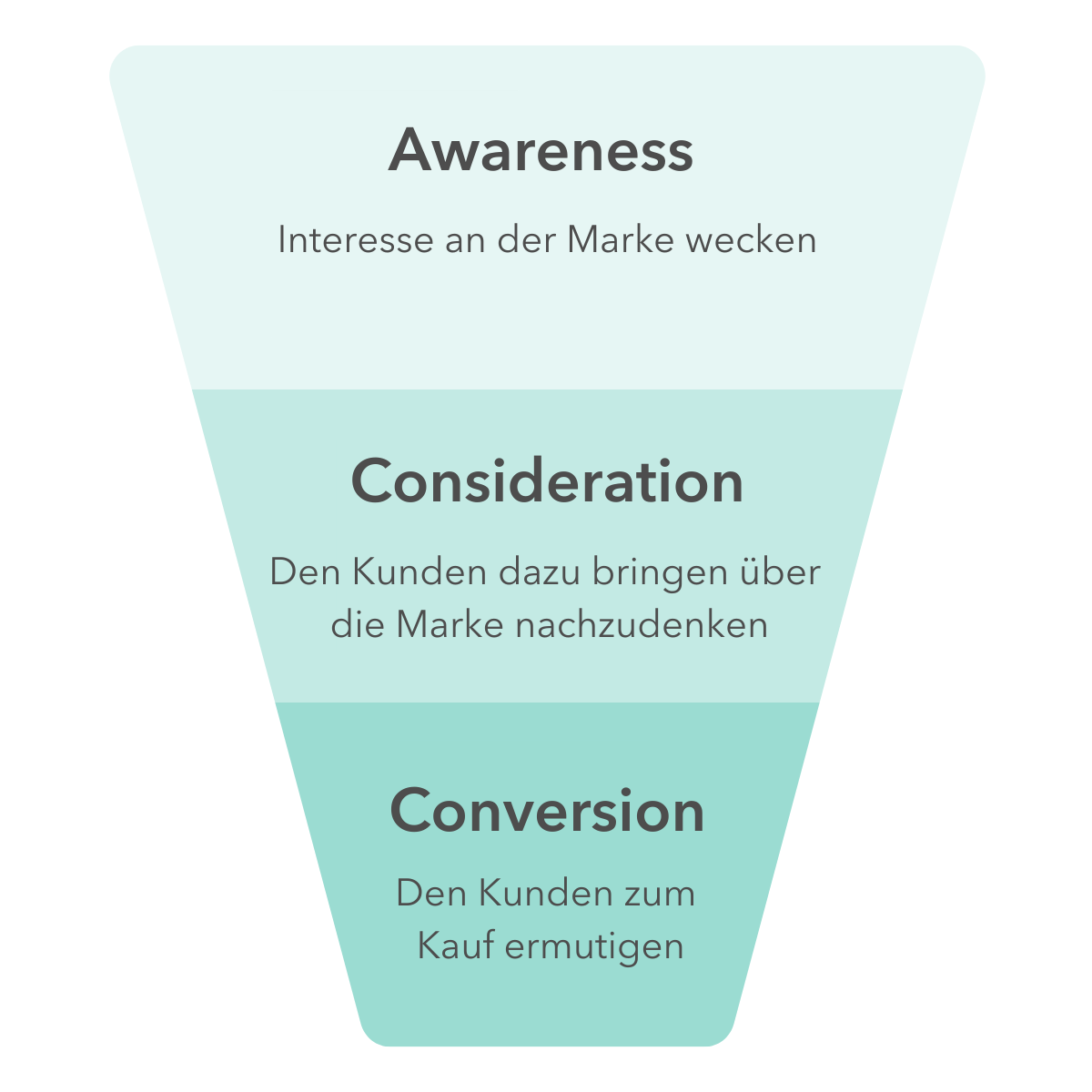
Full Funnel in Marketing – Tips for the perfect Full Funnel Marketing Campaign with Douglas Marketing Solutions
In marketing, you often hear the term full funnel, but not everyone has a clear idea of what it means. In this article we explain what a full funnel is, which phases it has and give tips for a successful full funnel strategy. Douglas Marketing Solutions offers its partners Full Funnel campaigns, which can be carried out both offsite and onsite.
What is a Full Funnel and what is it used for?
A full funnel, or also called a marketing funnel, sales funnel or conversion funnel, has the task of visualising the transformation from prospect to buyer. To illustrate the full funnel, we imagine a funnel in our mind’s eye. This starts at the top with a wide part and then becomes narrower and narrower towards the bottom.
In the top wide part, the funnel can hold many leads. In the course of a buying process, however, it must always be taken into account that some interested parties will drop out again. Figuratively speaking, the funnel becomes narrower and narrower and some leads will jump out of it. Those who complete the buying process, however, are called buyers. They go through the entire funnel and come out at the bottom as customers. For them, the marketing efforts have been successful.
However, with the funnel narrowing downwards, it is also made clear that the marketing measures that are taken are becoming more specific and focused. This is to address the group with the greatest conversion potential.
Above all, the model clarifies at which point in the process the user enters or leaves and helps to improve the marketing measures and uncover weak points. In this way, the usability of the website is increased and optimisation approaches can be determined.
The full funnel can be used for different types of marketing, both in the social media area and for search queries via search engines, for example.
Phases of the Full Funnel
The Full Funnel is based on the AIDA model known in marketing, which describes the effect of marketing measures on the consumer. If you are not familiar with it, here are the steps of the model to illustrate it:
- Awareness: Generating attention
- Interest: arousing interest
- Desire: evoking desire
- Action: Call to action
Depending on the application and the company, the full funnel has different numbers of phases, but the most common are these three.
- Upper-Funnel (Awareness-Phase)
- Mid-funnel (consideration phase)
- Lower-Funnel (Conversion-Phase)

Upper-Funnel
In the Upper-Funnel, also known as the Awareness-Phase, the aim is to create awareness for one’s own brand in order to increase the willingness to buy. This is because in the first phase of the buying process, potential buyers are not really ready to buy a product.
The user may still want to do some research on the product or brand to be more sure about their decision. It may also be because the potential customer does not feel a sufficient need to buy. Therefore, it is especially important to provide enough information and make the consumer feel secure.
Mid-Funnel
The mid-funnel, also called the consideration phase, connects the upper and lower funnels. In this phase, the potential customer has already researched the product, but is still not sure whether he or she will choose it. He then compares it, for example, with the competitor’s offer. That’s why it’s important to draw the user’s attention to your brand and convince them of your offer.
Lower-Funnel
In the lower-funnel or conversion phase, the conversion rate is highest and the number of users is lowest. Users who enter at this stage have already completed their research, are close to finalising their purchase and are only looking for a qualified offer and merchant. Now it is important to encourage potential buyers with a call-to-action and to convince them of the high quality of one’s own product or service.
Full Funnel Strategy in Marketing
The development of a full funnel strategy requires various specific measures. The goals are different, depending on the strategy. The potential customer should be picked up at exactly the point in his customer journey where he is at the moment. Depending on how far up or how deep they are in the funnel, the marketing measures must be different. This is expressed, for example, through different creatives and approaches. This also requires a constant adjustment of the marketing strategy.
Possible tactics of a full funnel strategy
As mentioned above, when choosing a strategy or tactic, it is very important to consider where the customer is in the customer journey or at what stage of the full funnel they are.
So when designing tactics for each stage of the funnel, it is also important to remember that each target group has different goals at different stages and should be measured against different metrics. Here are a few possible approaches for each section of the funnel:
- Upper-Funnel: This is primarily about reach and impressions. For example, display ads and video ads such as pre-roll videos help at this point. Content marketing can also be very helpful for user research. Tip: Book display and social campaigns with exclusive targeting based on 1st party data from Douglas.
- Mid-funnel: Here, clicks to the website and the click rate play a major role. Social ads are very suitable, but email advertising and paid search results through search engine advertising also make sense here.
- Lower-Funnel: Conversion and the cost-per-click balance are very important here. Audience ads or sponsored product ads are suitable for this, in order to give the final impulse to buy. In addition, the word remarketing takes centre stage. It makes sense to use retargeting to underpin the measures in this way.
After running a full funnel marketing campaign using these tips, the results should be analysed and evaluated. A lot can be learned from them and improved for the next campaign, because the Full Funnel is not a one-off project, but an ever-repeating process.
Full Funnel Strategy with Douglas Marketing Solutions
A Full Funnel campaign is relatively simple to explain, but it is best carried out by marketing experts in order to achieve successful results. The team at Douglas Marketing Solutions work closely with their clients to create a perfectly tailored Full Funnel campaign for them.
Contact us via our contact form if you are interested in working with us to design your marketing, increase your sales, achieve higher conversions and generate more impressions. We offer you various advertising solutions to get the most out of your product or service and generate more purchases and orders.